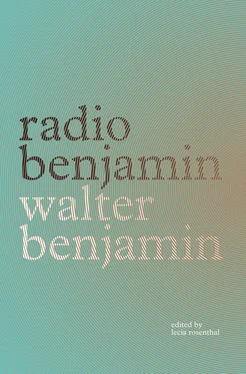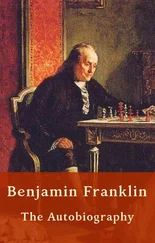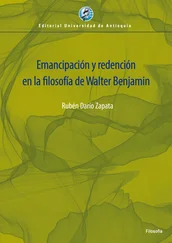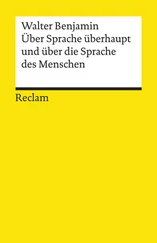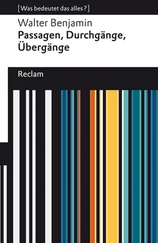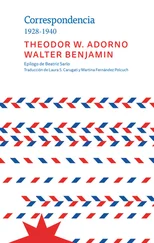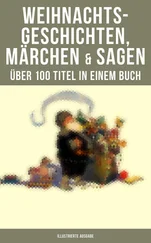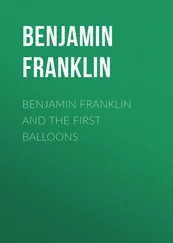7The Gründerzeit, or Founding Years, is a broad term used here to refer to the economic boom period from 1871 to 1873.
8Adolf Behne (1885–1948), Weimar architectural critic. See Adolf Behne, Neues Wohnen, neues Bauen [New Living, New Building] (Leipzig: Hesse & Becker Verlag, 1927), which includes a chapter entitled “Die Mietskaserne als letzte Ritterburg” [The Rental Barrack as the Last of the Castle Fortresses].
9See Uhu magazine, vol. 6.7 (April 1930), which features two images of a skyscraper, one in which the building is turned horizontally, “like an apartment block” (59).
CHAPTER 10. Theodor Hosemann
Are you familiar with this name? Probably not. You can no longer find him in any of your storybooks. But if one day you dig up an old book that belonged to your father or mother, you might discover this name on the title page, where it might say that he drew the pictures in the book. But because he was a very humble man, he didn’t always take credit for all the books he illustrated, so it could be that you know some of his pictures without ever having heard his name.
So, Hosemann was a painter. Why do we talk about him during the Berlin Hour? For starters, he wasn’t at all a real Berliner; he was born 123 years ago in Brandenburg, on the river Havel. 1Moreover, is it not a crazy idea to talk about a painter on the radio? It’s out of the question, of course, that I stand here and describe Hosemann’s pictures to you. But, even without describing any of his pictures, I can just tell you how he came to paint, draw, and make illustrations, and what people thought of his pictures, and how they were received. You’ll soon find out what was special about this man, and you’ll quickly grasp why I’m talking about him in the Berlin Hour even though he was from Brandenburg.
Hosemann was not coddled during his lifetime, certainly not by Berliners, among whom he lived and for whom he worked. We will soon learn why this was so. He was quite surprised when one day he received a letter from a professor from his hometown. The man was inquiring about his childhood for a book he wanted to write about Hosemann. Now we’ll read some of his reply, written five years before his death: “In 1816, from which point on my memory is quite clear,” so he was nine years old at the time,
we landed in Düsseldorf, on the Rhine, in a miserable little tarpaulin-covered fruit boat. Times were tough, the war against Napoleon and all the moving about had bankrupt my parents, and with prices rising my father’s monthly wage of sixteen or seventeen thalers was barely enough for even the most essential provisions. Our first apartment in Düsseldorf was a small, whitewashed room under the roof of a lodging house for sailors. Thanks to my youth I was cheerful, in good spirits and couldn’t understand why my mother and sister were crying every day. I took comfort in my box of paints and considered myself lucky if I could get hold of a piece of paper somewhere. But our life grew ever harder. I can still see my poor, sick mother and my sister crocheting curtain fringes from early morning till nightfall, and in winter by the light from a tin lamp. I needed to help earn something, so I went down to the color printing house of Arnz & Winckelmann, where soon I would while away entire days, drawing and painting to my heart’s content. I was the happiest child in the world when at the end of the week, on top of everything, I could bring home a few pennies to my tender, beloved mother. 2
How often Hosemann would later depict such a humble, tranquil family, toiling day after day with busy hands to earn a paltry wage. Often there would also be a sick mother or a feverish child lying in bed, because back then publications for young people, which Hosemann illustrated, loved to appeal to children with rather maudlin stories, hoping to influence their behavior for the better. But that was probably misguided. Kids are naturally interested in everything. If you show them the world only from the good and agreeable side, they’ll go out of their way to find out themselves about the other side. And even so, no one’s ever heard of kids learning naughty tricks from, say, Max and Moritz and trying to plug their teacher’s pipe with powder. 3But now back to Hosemann. When he wrote this letter, he was already a professor and a member of the Academy of the Arts. But what a hard road it was to get there; the boy was barely twelve years old when he had to start earning his keep. That it wasn’t just for fun, that he learned a great deal and that he trained himself very ably is made clear by the fact that when he was just fifteen he became the youngest illustrator employed at his firm, earning a yearly wage of 200 thalers.
We should say a bit more about this Winckelmann firm, as it determined Hosemann’s entire life. Having survived for almost exactly a half century, it relocated a few years later from Düsseldorf to Berlin and has only just recently disappeared. Like Hosemann himself, the company grew up with lithography. Lithography is the art of creating a drawing with chemical chalk or a pen on a stone plate, so that after the plate is covered with dye, it can be printed. This technique was invented at the end of the eighteenth century, but it took roughly twenty years before it was applied on a larger scale. Especially in France and Germany, this placed illustration on an entirely new footing. When in 1816 the first beautifully illustrated children’s book was published — Hey’s One Hundred Fables, with pictures by Otto Speckter — the idea came to Winckelmann to make such lithographic children’s books his main line of business. 4To enlarge his firm he went to Berlin. He couldn’t have found a better employee than Hosemann. And in turn, Hosemann’s work, linked as it was to his publisher, firmly established him in Berlin, where his keen observation and attentive study brought him closer to Berlin life than anyone else of his time. Hosemann had no interest in the grand art tours to Paris and Italy that were common among painters in his day. His travels would take him only as far as Antwerp and Tyrol. But his favorite destinations were Charlottenburg and Schöneberg, right here in Berlin, and in the summer he sometimes traveled with his family to Bad Freienwalde, in the surrounding Province of Brandenburg, which he found very elegant and about whose high prices he sometimes bitterly complained.
His art arose entirely from craft. With Hosemann there are neither grand ideas nor a proper artistic development, other than that he always grew more skillful. But the sobriety of his observations, the precision of his drawings, his sense of the comical, even a certain sentimental quality, entwined him so intimately with his closest subject, Berlin, that in the fifty years he lived here, he made pictures and drawings that show us life in Berlin from the widest range of perspectives: Sunday amusements for the petite bourgeoisie, a country outing or a game of skat in a tavern, as well as the craftsman at work, the chimney sweep, the bricklayer and the cobbler, the activities of rag pickers, soldiers and servants, dandies, Sunday riders, musicians. You would think that Berliners, out of pride, would have seized on a painter who exhibited such love for their city by documenting it in minute detail. But that wasn’t at all the case. Their sense of superiority would again rear its head. Berliners found Hosemann’s art to be a bit ordinary, inelegant, lacking in refinement. They were at odds with one another over such aesthetic questions as: Should one paint historical tableaux, great battles, scenes from the Reichstag and royal coronations? Or so-called genre paintings, by which they meant contrived, eccentric, embellished scenes from everyday life, with no kaisers and no military, but featuring monks, salon-goers, pedants, and dandies. It was in style to paint, for instance, a portly monk raising his wine glass and grinning as the sun shines through the wine. Or a young lady reading a love letter, and behind her, the suitor who wrote it peeking through a crack in the door, surprising her. Berliners back then were fond of such nonsense, at least the pretentious ones.
Читать дальше
